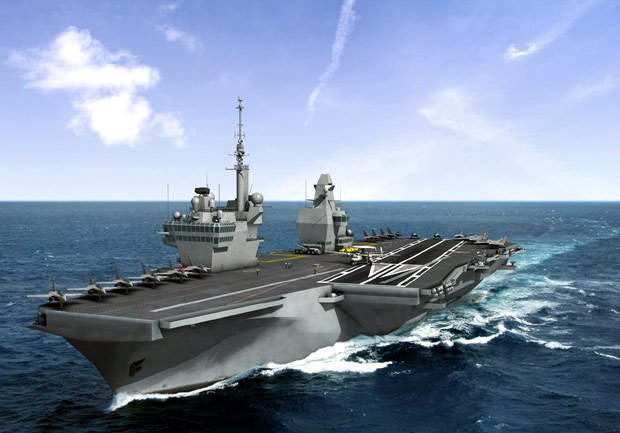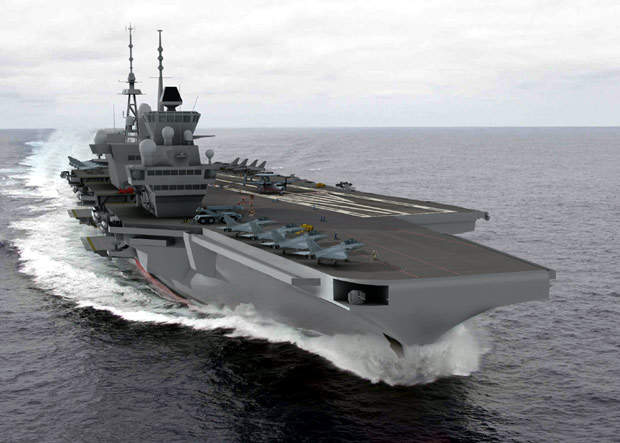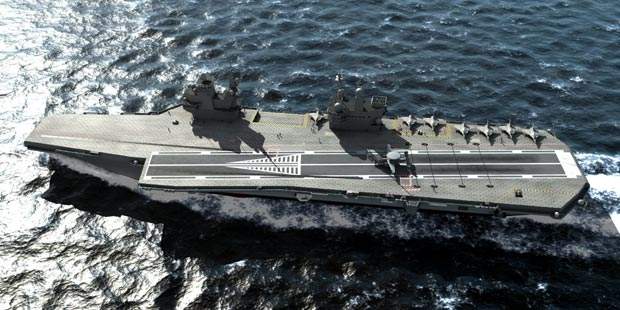Porte-Avions 2 (PA2) is a new aircraft carrier to be built for the French Navy. Scheduled to enter service in 2015, PA2 will complement the existing aircraft carrier, Charles de Gaulle.
PA2 will have a maximum speed of 28kt and a range of 10,000nm at 15kt. It will have a total crew of 1,720 including 620 aircrew and 100 operational staff.
In January 2005, the French MoD, through the defence procurement agency (DGA), awarded a €100m PA2 design phase contract to DCNS and Thales Naval France.
It was initially planned to develop the PA2 based on the design of UK Royal Navy future aircraft carriers (CVF). The memorandum of understanding on the Anglo-French future aircraft carrier was signed on 6 March 2006.
However, in June 2008, French President Nicolas Sarkozy suspended cooperation with Britain in this regard. The decision to equip the French Navy with new aircraft carriers will be taken between 2011 and 2012.
Design
PA2 is a 75,000t, 283m-long variant of the CVF. The French version's deck carries a CATOBAR (catapult-assisted take-off but arrested recovery) design. The carrier was designed to carry the Dassault Rafale, the E-2C Hawkeye and the NH-90.
The initial design carried a conventional propulsion system, but the option of nuclear propulsion and Azimuth thrusters are also being considered.
The French Government issued orders to conduct studies on new architecture and design in February 2009.
Aircraft carrier deck
The PA2 will carry up to 40 aircraft including 32 Rafale combat aircraft, three E-2C Hawkeye surveillance aircraft and five NH90 helicopters. The 90m-long C13-2 steam catapults can launch aircraft at over 150kt. The power will be provided by an auxiliary steam-generating plant. The carrier can launch aircraft at a rate of one every 30 seconds. The vessel is equipped with mk7 mod 4 3 wire-arresting gear and barricade to accommodate the landing of aircraft.
The flight deck area will be 15,700m² and hanger area 4,700m². The vessel has a fuel storage capacity of five million litres of aviation fuel. The planned installation of the système automatique de tranquillisation de la platforme (SATRAP) will enhance the operational capabilities of flight deck in up to sea state 5/6.
Weapons
The carrier will be fitted with an eight-cell Sylver vertical-launch silo for Aster 15 missiles, a SLAT anti-torpedo defence system and 20mm small-calibre guns. EADS and its subsidiary MBDA have received study contracts for the integration of ASTER 15-SAAM systems. PA2 will also be equipped with an integrated combat management system (CMS).
Sensors
The carrier will have infrared sensors and optronic sensors. The air search radars include a Héracles air search and a medium-range radar.
Command and control
The vessel will be equipped with internal and external communications suites. The internal suite includes HF, UHF and VHF radio links.
The external suite includes tactical data-links of L11, L16 and L22. The data links enable real-time high-speed transfers between the PA2 combat system and Hawkeye aircraft. The data links also distribute information to other naval units, combat aircraft and helicopters.
Propulsion
Initially, it was announced that the PA2 would be powered by a conventional propulsion system. The conventional electric propulsion system was based on two Rolls-Royce MT30 gas turbines and pods.
In September 2006, the French Navy decided to choose different machinery and propulsion system to increase the PA2's speed from 26kt to the originally required 29kt. Aker Yards, DCN Propulsion and Alstom in association with General Electric have developed a new design, in which the propulsion is based on four LM2500+G4 gas turbines. The engine will power a centre shaft and two propulsion pods.










